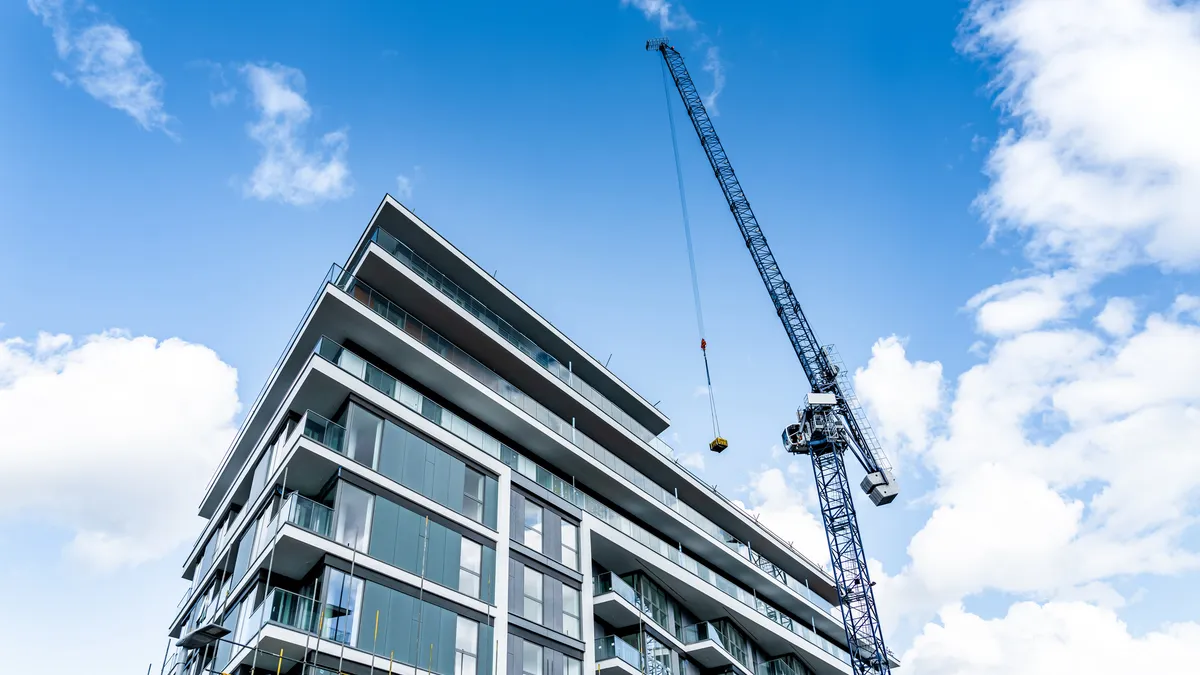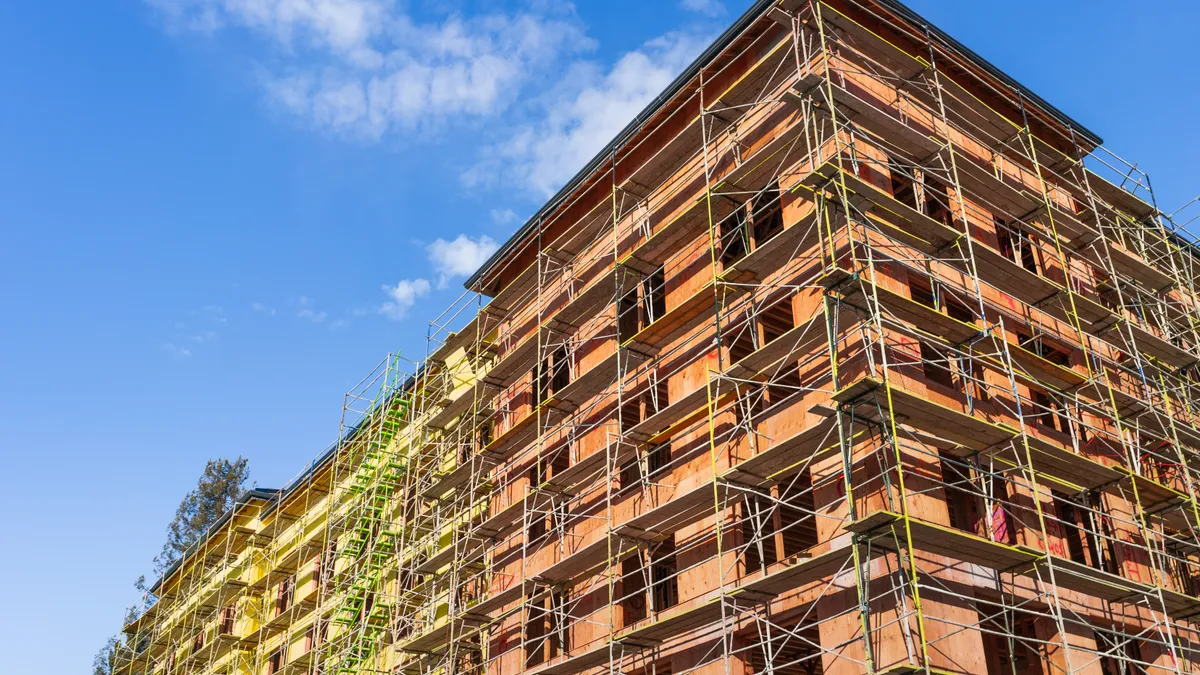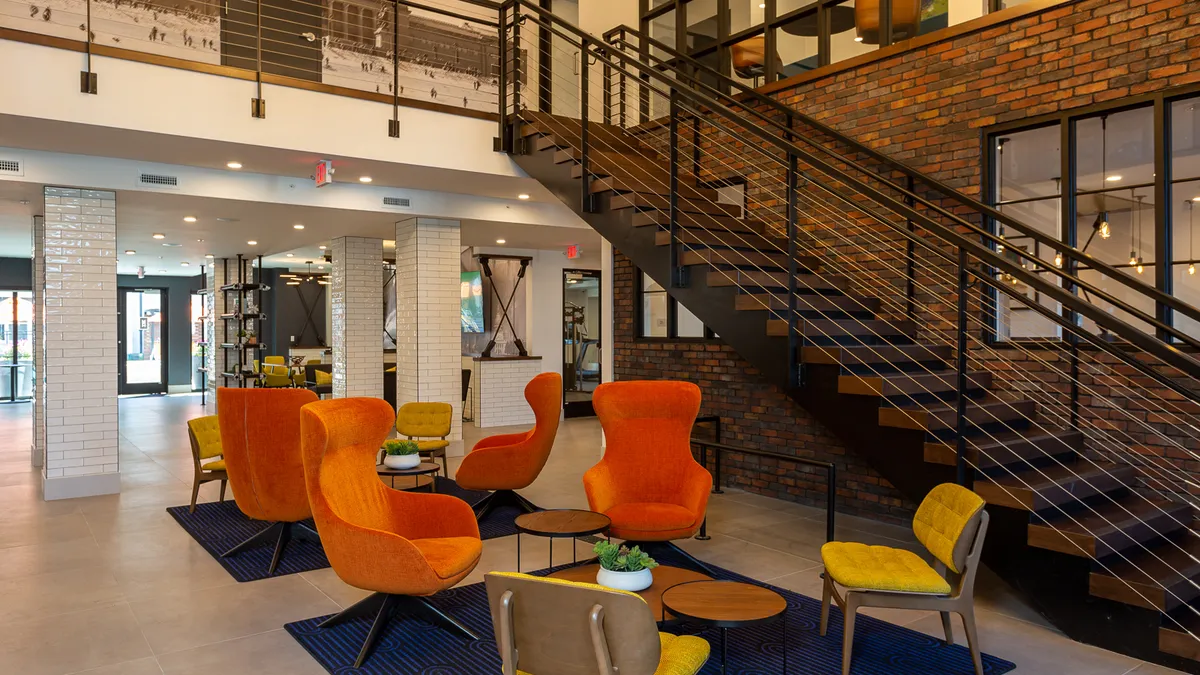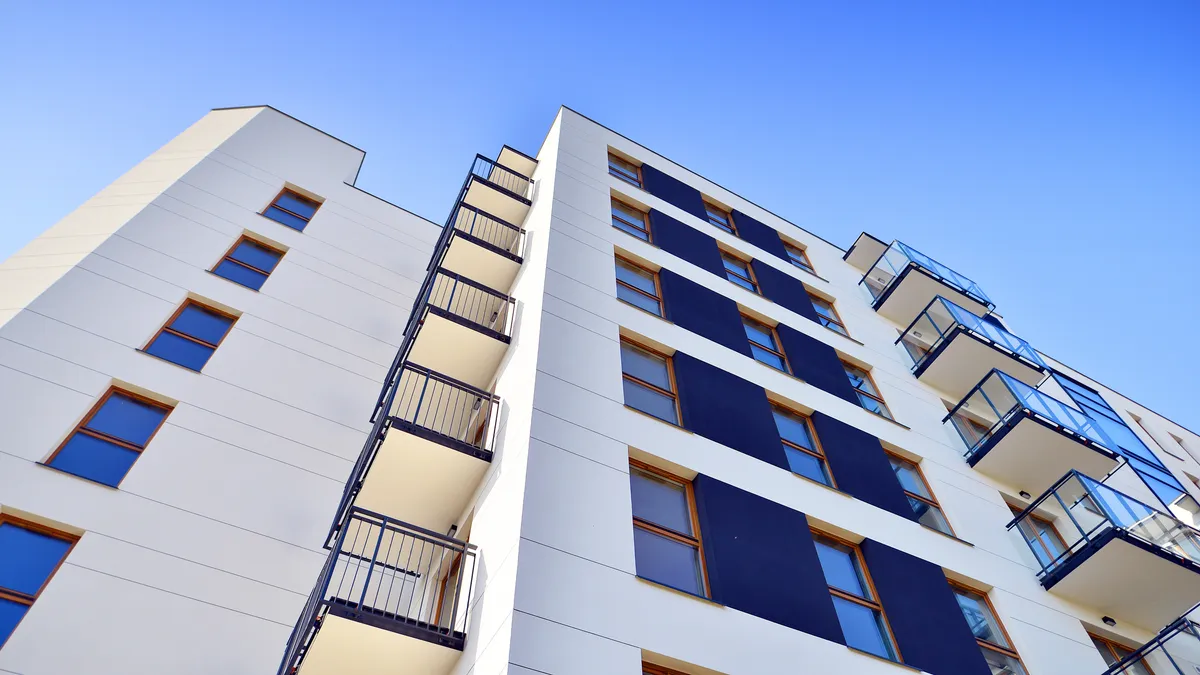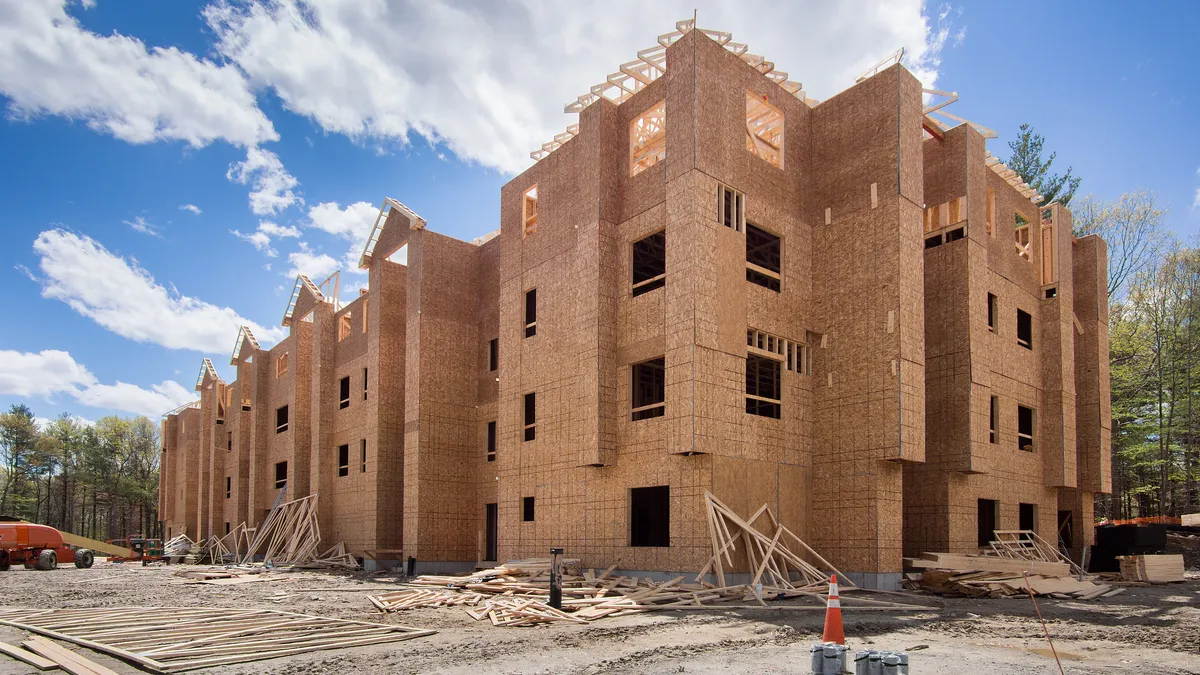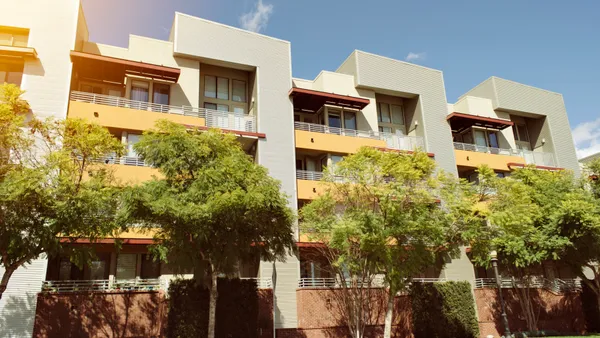Going into 2023, multifamily professionals of all stripes expected apartment starts to plummet as financing dried up.
But as the year progressed, one of the biggest surprises was the persistence of apartment developers. Year-over-year starts continued to rise into the summer, even though the signals and the commentary from the ground were that construction was slowing.
It turns out that the disconnect between the numbers and the noise was simply a result of developers emptying their construction pipelines and starting projects where they already had capital commitments in place from banks and equity partners.
“I just think that developers are crafty enough to keep their legacy deals in place, and that’s why you haven’t seen a dramatic falloff in starts,” Ric Campo, CEO of Houston-based REIT Camden Property Trust, said on the REIT’s first quarter 2023 earnings call.
But, soon after Campo made those remarks, starts for buildings with five or more units began to plummet, dropping 11.2% in June and then more than 30% each month through November.
As the calendar turns to 2024, no one expects new projects to pick up soon. Here are five trends to watch, starting with starts:
Starts will drop
Scottsdale, Arizona-based Alliance Residential was the top developer in the country in 2022, with 13,480 starts. It has 50 projects and about 15,000 units in its pipeline yet to start. But those numbers pale in comparison to its roughly 100 projects and 30,000 units under construction.
“We peaked in 2021 and 2022,” said Jay Hiemenz, president and chief operating officer of Alliance. “We’ve been coming down and expect a sluggish 2024 from a production standpoint.”

For small developers, the dropoff in construction could be even steeper. Ryan Davis, CEO of Witten Advisors, a Dallas-based firm that provides apartment companies with advisory services, sees starts nationwide winding down from more than 500,000 units in 2022 to 420,000 in 2023 and 280,000 in 2024.
“We’ll probably get to pre-COVID levels in 2028,” Davis said. “But it's going to be tough to get back to that half-a-million figure that we had in 2022 anytime soon.”
Financing will remain tough
Though the slowdown in starts will have a major impact on the industry, difficulty securing financing may be the top hurdle for developers in 2024.
The issues began when the Federal Reserve started hiking rates in early 2022 and have grown worse since then. Problems intensified after the collapse of Silicon Valley Bank and Signature Bank in March 2023. “Projects are taking a long time to capitalize,” Hiemenz said. “There isn’t that much debt available from the traditional lenders.”
Add in that many banks are also dealing with loans in the struggling office sector, and it's easy to see they’re reluctant to lend for new apartment projects. Financing rates start at 8% or 9% for multifamily, and lenders want more equity contributions from developers, according to Yardi.
“The capital markets are pretty constrained,” Hiemenz said. “I guess the question will be when they open back up, particularly on the lending side. Maybe it's in the fourth quarter of 2024, but probably, more realistically, it’s into 2025.”
Transactions will start to pick up
Developers have been hit hard as apartment sales have ground to a halt. Instead of selling projects, paying off bank loans and moving to the next project, they’re forced to hold on to newly built assets.
“The transaction market has completely frozen up, so those loans aren't getting paid off,” Davis said.
If a property is sold, banks can make new construction loans, but that just isn't happening right now. Fortunately, many observers think transactions will pick up this year, at least a little bit, especially if the Federal Reserve cuts interest rates. That would allow banks to clear those construction loans and maybe start dipping their toes into construction lending.

“From what we hear, there is $275 billion of capital on the sidelines that is going to break free at some point,” said Miller Sylvan, senior vice president of development for Dallas-based builder JPI. “As soon as there's a little bit more clarity on what interest rates are going to be and therefore what values are, some of that will start coming off to the sidelines.”
Land will break free
When developers can’t get financing, they have to decide what to do with the land they have under control. They can try to renegotiate deals or they can just walk away. “We are seeing land deals get dropped,” Sylvan said. “Maybe some developers who don't have as good a track record or capital partners are not able to get things done in this environment.”

For larger developers and REITs, many sitting on cash to make deals, that presents an opportunity to secure dirt at a potential discount, though land owners can be slow to adjust pricing. “We are seeing a lot of opportunities [to buy land] today,” Sylvan said.
With many merchant builders out of the game as they work to get current projects off their books, competition could also be limited for land. “It'll be selective, but that could be a fruitful area,” AvalonBay’s CEO Benjamin Schall said on the REIT’s third-quarter conference call.
Costs should come down
After pandemic-induced spikes in certain building materials, like lumber, things returned to some form of normalcy in 2023.
“Certainly, materials costs and things like lumber and concrete and metal have definitely stabilized,” Hiemenz said. “Before, it was anybody’s guess with lumber.”
Despite overall construction costs coming down the last couple of months, Ken Simonson, chief economist at the Associated General Contractors of America, said material volatility was not “completely dead.” Recent attacks in the Red Sea and the resulting diversion of ships from the Suez Canal have caused shipping costs to rise, which could put upward pressure on certain materials this year.
Personnel prices remain high, according to Hiemenz. “We haven't seen much relief in labor, and we haven't yet seen much relief on subcontractor margin,” he said. “I suspect we'll start to see that. We’re peaking now in terms of the level of activity before it starts falling.”
As more apartment developments are delivered and contractors need work, prices should come down, at least a little bit. “Subs will get less busy, and then they'll get more competitive in terms of their pricing,” Hiemenz said. “But labor has been pretty tight.”
Click here to sign up to receive multifamily and apartment news like this article in your inbox every weekday.



